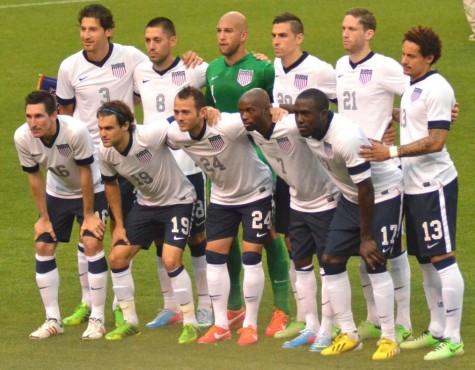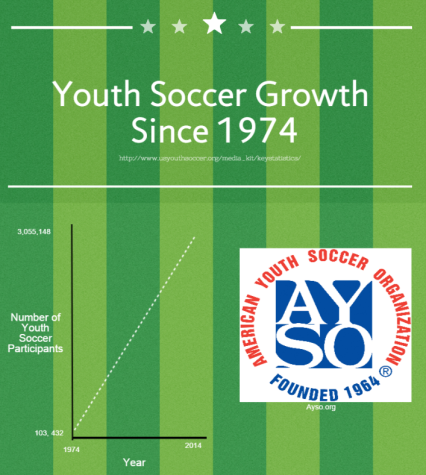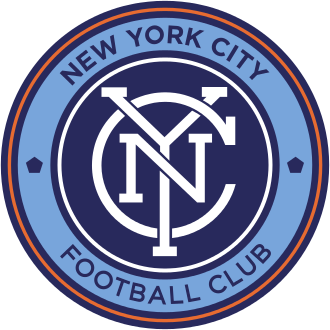The Football Revolution: How Long Until Soccer Thrives in America?
April 2, 2015
Football, or soccer as Americans call it, is by a landslide the most popular sport in the world. Thus far, it has failed to gain widespread popularity in the United States.

U.S. Men’s National Team Starting 11.
The sport, which originated in 19th century England, is a widely accepted entertainment and cultural phenomenon that brings people with very different backgrounds together. There is no sport that has been embraced so extensively by so many different cultures. Evidence of this is the excitement surrounding the 2014 FIFA World Cup and in turn, the lucrative revenue generated by the sport in media markets across the world.
The United States is host to some of the most highly competitive sports leagues in the world but Major League Soccer lags behind its peer leagues in other countries. Only a small percentage of sports fans in the United States follow soccer, and of the ones that do, very few are fans of Major League Soccer. Are Americans ready to become passionate about soccer in the same way they are about football, basketball, baseball, and hockey?
There are several factors undermining the success of soccer in the U.S.. One is its lack of appeal on television. Soccer is slower-paced and lower-scoring than football, basketball, and hockey as well as other sports that Americans are accustomed to. In addition, the most highly televised sports in the U.S. each have over twenty 90-second opportunities each game to sell to sponsors while soccer games stop only at halftime. With fewer windows to sell to sponsors, major American networks are more reluctant to carry soccer games. As such, the structure of soccer games is not built to thrive in the commercially-based sports entertainment industry in America. The primary networks in the U.K., Sky Sports and the BBC, rarely show ad messages during broadcasts.
Another primary reason that soccer has fallen behind in popularity domestically is that the United States cannot consistently compete at the same level as other similar countries. The highest level of international competition tells the story. Much smaller countries have defeated the United States Men’s National Soccer Team repeatedly. But why is this the case? The answer is that in the United States it is much easier to make money as an athlete if you choose to pursue a career in a more popular sport. In many other countries around the globe, there are no NFL, NBA, NHL or MLB teams competing for the top athletes.
The high level of competition in a domestic league inspires the best young athletes to specialize in that sport and improve the level of play on an international stage. For example, the NBA is considered to be the best basketball league in the world because of the level of competition and media exposure. As a result, the USA Men’s National Basketball Team is one of the best in the world, consistently medaling at the Summer Olympics and winning the FIFA World Cup in 2014.
Most other countries have limited sports available for the masses and, for children especially, soccer has become the mainstay sport in most places in Europe and elsewhere. This leads to specialization of the top athletes in soccer.
 In comparison, most young children in the United States grow up playing many sports. Despite this, as the chart shows, the American Youth Soccer Association registered over 3 million participants in 2014, a number which has grown dramatically over time.
In comparison, most young children in the United States grow up playing many sports. Despite this, as the chart shows, the American Youth Soccer Association registered over 3 million participants in 2014, a number which has grown dramatically over time.
Perhaps as awareness surrounding the number of traumatic head injuries in American Football increases, parents are looking to get their children more involved in a sport like soccer.
Despite the elements which are hindering the domestic popularity of soccer, the 2014 FIFA World Cup saw an increase in popularity among Americans. The round of 16 match, between the United States and Belgium, recorded the highest ever rating for a World Cup game on ESPN (a 9.6 rating, according to Nielson). Additionally, the United States had more fans travel to the World Cup than any other country. This is partially due to the summer vacation season as well as the socioeconomic circumstances of many American fans. All in all, the success of the 2014 World Cup among American fans is a strong sign of the forthcoming potential of the sport.
Major League Soccer, the biggest and longest lasting American soccer league, has many qualities of the other major sports platforms in the U.S. but it lacks the same level of talent. The MLS is ranked as the seventh best soccer league globally behind England’s Premier League, Spain’s La Liga, Germany’s Bundesliga, France’s Ligue 1 and Italy’s Serie A among others. No other major sports league in the United States had as much international competition throughout its growth.
There have been attempts by international stars such as Thierry Henry and David Beckham to bring popularity to soccer in the United States. More international stars past their prime have plans to move to the MLS, which is a positive step forward. Players such as David Villa, Frank Lampard, Stephen Gerrard, and Kaka have all planned moves to Major League Soccer clubs. The league needs to find a way to draw more of the world’s top talent in the future in order for teams to be competitive with the world’s most historic and successful clubs.
If Major League Soccer is able to sustain its healthy evolution, the hope of many is that it will bring in higher attendance rates and more lucrative television deals.
Tom Glick, President of New York City Football Club, shared his thoughts on the future of soccer in the United States.
“I think the biggest difference [between here and in Europe] would be that the U.S. has a number of other well-established sports, not only what people play but also spectator sports. Whereas in the rest of the world football is the number one sport. Statistically, the fastest growing sport [in the U.S.] is soccer,” he added.

The New York City Football Club Badge.
“The sports landscape [in the United States] is a place where fans support multiple teams. In the UK most fans just support one football team.”
He then went on to talk about the state of Major League Soccer right now and where it’s headed.
“The future for Major League Soccer is very bright. It is 20 years old, getting stronger and stronger, and there are clubs that continue to elevate the league itself. I think the first thing about [the MLS] is that it is very healthy as it continues to grow in almost every aspect and more and more players are interested in joining. Having the big international stars come makes the league all the more interesting.”
New York City Football Club is a new Major League Soccer expansion team in 2015 owned 80% by City Football group (which own Manchester City) and 20% by Yankee Global Enterprises (affiliated with the New York Yankees). Mr. Glick went into why such a large investment was made by two well established groups.
“The future is very bright. In the case of Manchester City and the Yankees, we have made this investment in New York City FC because we believe that soccer is going to continue to grow. Look at the recent transaction values of franchises and what people are willing to pay [for professional teams]. It’s a real sign of strength that people want to be a part of this league. The future is bright for our Premier League team [Manchester City] in the United States because of the growing desire of Americans to follow soccer.”
According to Mr. Glick, it’s not a matter of if but when soccer will sit atop of America’s sports entertainment industry alongside the NFL, MLB, NBA, and NHL.
Mr. Glick said, “It depends on who you ask, I don’t think we’re far away right now. It all depends on the lens you look at it through. Soccer is the fastest growing sport in the U.S. and young people are becoming more involved.”
Daniel Cox of the Huffington Post made an excellent point in his article, “Is Soccer Destined to Become America’s National Pastime?” when he wrote “The average age of Americans who say soccer is their favorite sport is just 37, while the average age for football fans is 46 and for baseball 53. If baseball is America’s past, and football is its present, then soccer may be its future.”

With the English Premier League signing a deal with NBC, more fans in the U.S. will be exposed to the style of soccer that has become so popular overseas and in turn could lead to the growth of soccer in the United States.
Soccer has had a sometimes tricky experience expanding throughout the United States, but its rapid growth in youth participation and healthy economic and professional progression have set it up to become a major part of the future of America’s sports media market.
Major League Soccer spokesman Dan Courtemanche stated that the “goal is to be among the world’s top leagues by 2022.” If the MLS continues on its current trajectory, it might just meet that goal and become even closer to turning the “big four” American sports leagues into a formidable “big five.”
